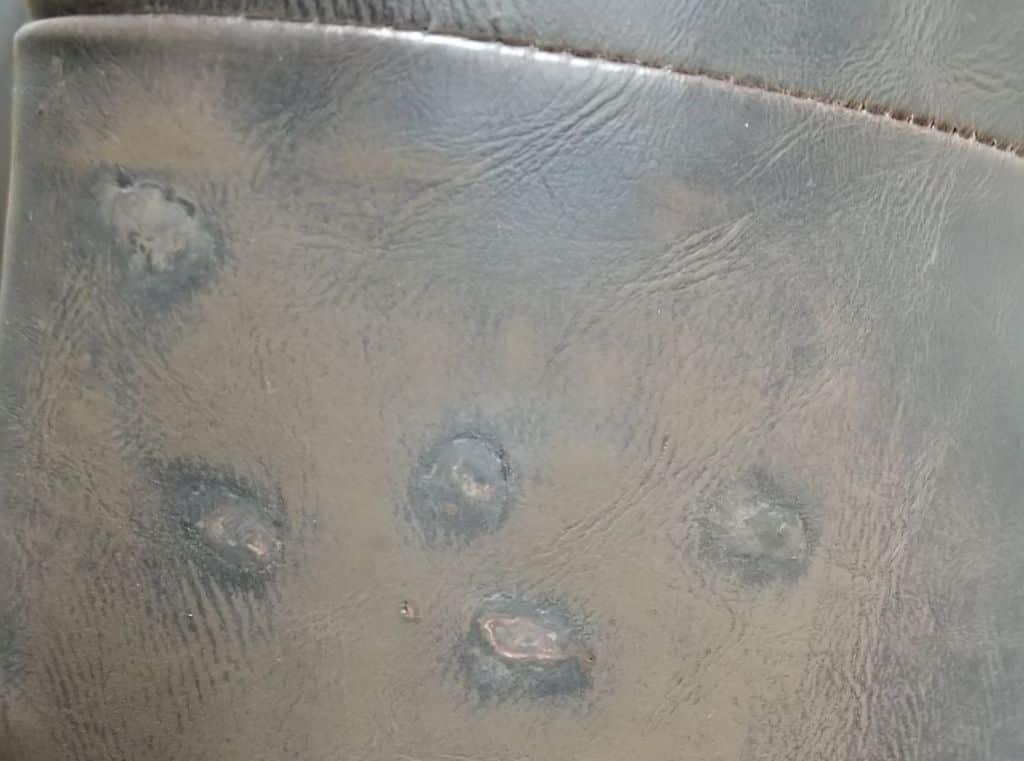If your repairs look pocked-marked after using this method, it’s probably because too much glue was used. Super glue is a rigid adhesive and not normally suited to flexible materials like upholstery, except in tiny amounts. Regardless of whether any flaps glued down nicely or had to be trimmed away (and left a bigger void), the key in application is to remove the vast majority of glue while still wet and sand the rest.

To correct heavy-handed glue spots:
- Sand the spots with 220 or 320 grit wet-or-dry sandpaper. Avoid sanding the surrounding finished leather. There is sufficient evidence that leather dust can cause cancer (though we’ve been exposed to it for years).
- Touch-up the repair if necessary, but be very minimalist with super glue. Use a large needle to apply, remove most of it with a paper towel and sand the rest just so little gouges are filled.
- Dabbing the color more heavily on those areas will get faster coverage. Then blend outward.
- If the repairs remain noticeable after coloring, remove most of the color with rubbing alcohol, and then apply a spray grain to blend appearance.
CAUTION: Studies of workers in shoe factories and tanneries show sufficient evidence that exposure to leather dust causes sinonasal cancers, so wear a mask.